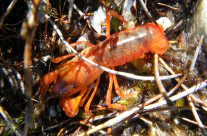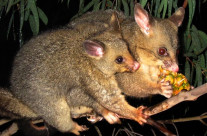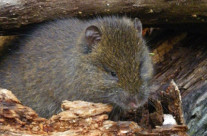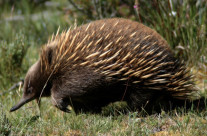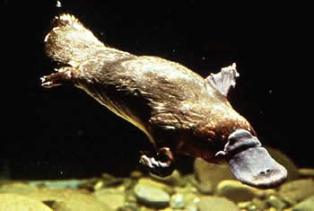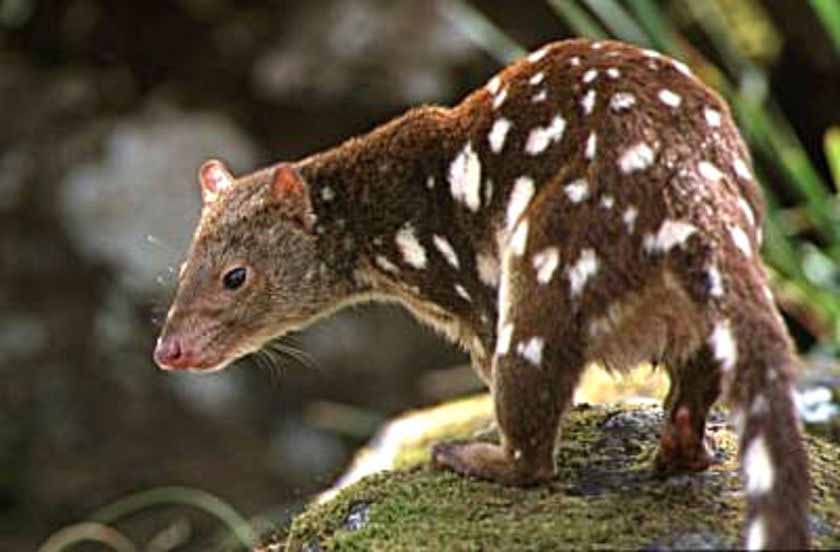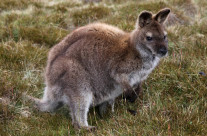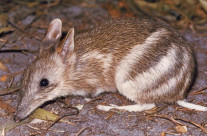The forest and plant communities of the River-Forest support a vast range of fauna including mammals, birds, reptiles, insects, frogs, invertebrates and aquatic species. The area is home to a number of threatened and rare species. The serious decline in the population of some animals has been caused by large scale clearing of native bush and undergrowth, disease, introduced animals, cats and dogs. The urban area presents some threats. Introduced animals and roaming pets destroy native wildlife; their habitats; and the ecosystems that they depend upon for survival.
- The Eastern Barred Bandicoot, Southern-brown Bandicoot and Spotted-tailed Quoll are endangered and fully protected by law. Bandicoots are small, nocturnal, solitary marsupials, with large ears and pointed snouts. The Eastern Barred Bandicoot (Perameles Gunnii) has a white tail and stripes across its hindquarters. The Southern- brown Bandicoot (Isoodon Obesulus) is dark brown in colour and its nose, ears and hind feet are shorter. They feed on soil invertebrates and pasture pests including Corbi Grubs and Cockchafer Larvae, berries and fruit.
- The Bennetts or Red-necked Wallaby (Macro Rufogriscus) is Tasmania’s largest marsupial and the Rufous or Tasmanian Pademelon ( Thylogale billardierii) is the second largest. The Bennetts Wallaby is easily distinguished by its black nose and paws, and white stripe on the upper lip. Both are mostly nocturnal and solitary, but may be seen grazing at dusk while they feed on grasses and herbs, and the leaves of trees and shrubs.
- The Spotted-tailed Quoll (Dasyurus maculatus) is the second largest carnivorous marsupial in the world. They kill their prey such as rats, gliding possums, small or injured wallabies, and reptiles by biting on or behind the head. They vary from reddish brown to dark chocolate brown with white spots on the body and tail.
- Platypus are resident in the freshwater habitat of the Brid River. They dig burrows in the earth banks and forage mainly at night on small invertebrate animals on the bottom, including crustaceans, worms, molluscs, as well as the larvae of many freshwater insects. They can easily detect movement on the river bank, and they have acute hearing.
- Echidnas are shy creatures and move slowly and carefully. If disturbed they roll into a ball or vigorously dig into the ground so that only the spines are exposed. They have short limbs and powerful claws. They mainly eat ants and termites, but other invertebrates especially grubs, larvae and worms can be a part of their diet.
- The nocturnal Swamp (velvet-furred) Rat (Rattus Lutreolus) is a native small mammal, half the size of the introduced black and brown rats. It forms extensive systems of runways beneath dense vegetation.
- The Brush-tail Possum (Trichosurus Vulpecula) is nocturnal and is named for its very bushy tail. It has very thick soft fur that ranges in colour from silver-grey to yellowish tan to dark brown.
- The swampy low lying areas of the River-Forest track provide the perfect habitat for the tiny and vulnerable Burrowing Crayfish ( Engaeus genera).

